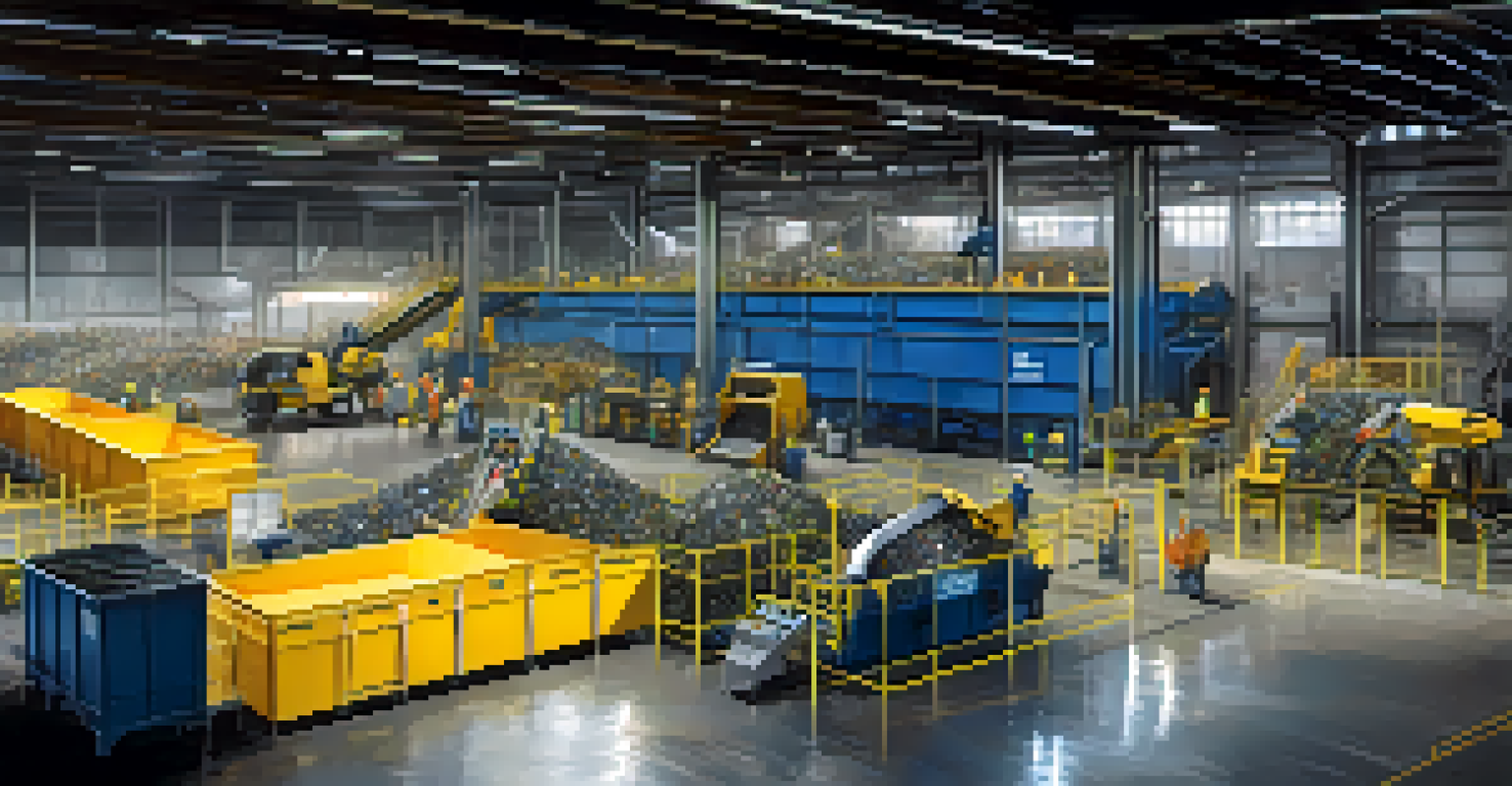Circular Economy: Reducing Waste Through Innovative Practices

Understanding the Circular Economy Concept
The circular economy is a transformative approach to how we think about resources. Rather than a linear model of 'take, make, dispose,' it emphasizes keeping materials in use. This means designing products for longevity and reusability, aiming to minimize waste at every stage.
Waste is a design flaw.
In a circular economy, waste is reimagined as a resource. For instance, instead of discarding old electronics, they can be refurbished or their parts can be reused in new products. This shift not only conserves resources but also fosters innovation in product design and manufacturing processes.
Ultimately, embracing the circular economy encourages a cultural shift towards sustainability. It invites businesses and consumers alike to rethink consumption and production patterns, creating a healthier planet for future generations.
The Role of Design in Reducing Waste
Design plays a crucial role in the circular economy by prioritizing sustainability from the outset. For example, products can be designed to be easily disassembled, allowing for efficient recycling. This proactive approach helps ensure that materials remain in circulation rather than ending up in landfills.

Innovative design also involves using sustainable materials, such as biodegradable plastics or recycled metals. These materials not only reduce environmental impact but also create new market opportunities for businesses. As consumers become more eco-conscious, products made from sustainable resources are increasingly in demand.
Circular Economy Redefines Waste
The circular economy transforms waste into a resource by promoting the reuse and recycling of materials.
Furthermore, thoughtful design considers the entire lifecycle of a product. By assessing potential waste at each stage—from production to disposal—designers can implement strategies that significantly reduce overall waste output.
Innovative Recycling Techniques
Recycling is a cornerstone of the circular economy, and innovative techniques are making it more efficient. For example, advanced sorting technologies can now separate materials more effectively, ensuring that recyclables are processed properly. This reduces contamination and increases the quality of recycled materials.
The circular economy is about designing out waste and pollution, keeping products and materials in use, and regenerating natural systems.
Another exciting development is the use of chemical recycling, which breaks down plastic waste into its original components. This method allows for the recycling of materials that were previously deemed non-recyclable, thereby expanding the range of materials that can be reused.
These innovations not only enhance recycling rates but also reduce the need for virgin materials. By closing the loop on material use, we can significantly cut down on waste and lessen the environmental impact of production.
Business Models Supporting Circular Practices
Many businesses are adopting models that align with circular economy principles, focusing on sustainability and waste reduction. Take, for example, companies that offer product-as-a-service models, such as leasing rather than selling products. This encourages manufacturers to create durable goods that last longer and are easier to maintain.
Another effective model is the take-back scheme, where companies collect used products to recycle or refurbish them. This not only reduces waste but also fosters customer loyalty, as consumers appreciate brands that prioritize sustainability.
Design Drives Sustainability Efforts
Innovative design prioritizes sustainability, allowing products to be easily recycled and materials to remain in circulation.
By shifting to these innovative business models, companies can enhance profitability while simultaneously contributing to a more sustainable future. This dual benefit is becoming increasingly attractive in today’s eco-conscious market.
Consumer Involvement in the Circular Economy
Consumers play a pivotal role in the success of the circular economy. By making informed choices—like opting for products with minimal packaging or those made from recycled materials—they can drive demand for sustainable practices. This collective consumer action encourages companies to adopt more circular practices.
Additionally, participating in local recycling programs or community exchanges can help keep materials in circulation. For instance, swapping clothes or sharing tools with neighbors reduces the need for new purchases and minimizes waste.
Education is key here; consumers must understand the impact of their choices. As awareness of the circular economy grows, so does the potential for meaningful change driven by consumer behavior.
Case Studies of Successful Circular Economy Initiatives
Around the globe, various organizations have successfully implemented circular economy practices. For instance, a furniture company might take back old products to refurbish them for resale, significantly reducing the need for new materials. This not only minimizes waste but also creates a unique selling point.
Another example is clothing brands that use recycled materials in their production processes. By repurposing waste fabrics, these brands not only reduce their environmental footprint but also appeal to eco-conscious consumers, strengthening their brand image.
Consumer Choices Impact Change
Active consumer involvement in sustainable practices encourages businesses to adopt circular economy principles.
These case studies serve as inspiration, demonstrating that adopting circular practices can lead to both environmental benefits and business success. As more companies share their success stories, the movement toward a circular economy gains momentum.
The Future of Circular Economy Practices
The future of the circular economy looks promising, with ongoing innovations set to redefine how we view waste. As technology advances, new materials and methods for recycling will likely emerge, making it easier to adopt circular practices. This continuous evolution can lead to more sustainable production and consumption patterns.
Moreover, as global awareness of climate change and environmental issues grows, more businesses will be compelled to embrace circular economy principles. Regulatory pressures and consumer demand will drive this transition, creating a ripple effect across various industries.

Ultimately, the future of the circular economy is about collaboration among businesses, consumers, and policymakers. By working together, we can build a more sustainable world, significantly reducing waste and preserving our planet for generations to come.